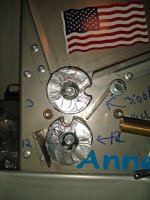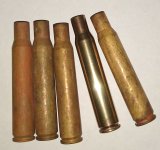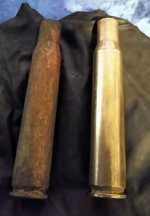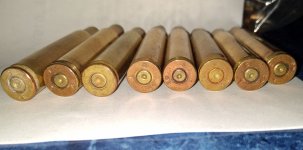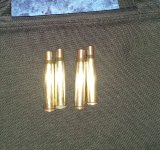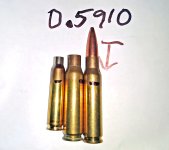Not sure if this is just me and my guns but here is what I see after firing and resizing with a Redding Elite type S bushing die set.
I have 300 WM, .308win, 6.5cm and they all seem to fire a few times with neck sizing only then after the first 2 or 3 firings I would assume they would be my chamber size. So my 300 WM like 2.010 on my SAC comparator with a Mitutoyo caliper. I spray lube and I set my sizing die(on a Forrester CO-AX) until I get a 2.010 measurement(They are 2.014ish) when I start. I run 10 cases and I get 2.009, 2.006, 2.011, 2.012...
I cant for the life of me figure out why I get such a weird range of sizes with a fixed die in a decent press. I assume the cases arent all the same size when I start.
Below is my numbers from 50 rounds of PPU brass(I know its crap, It was factory ammo I bought for the brass when 300wm was hard to find). Its weird that the numbers get worse from min to max after sizing I would expect .0005 to .001 range after my process.
Any constructive thoughts would be appriciated. I know I need to invest in Lapua brass, I can't find any when I look locally.
I have 300 WM, .308win, 6.5cm and they all seem to fire a few times with neck sizing only then after the first 2 or 3 firings I would assume they would be my chamber size. So my 300 WM like 2.010 on my SAC comparator with a Mitutoyo caliper. I spray lube and I set my sizing die(on a Forrester CO-AX) until I get a 2.010 measurement(They are 2.014ish) when I start. I run 10 cases and I get 2.009, 2.006, 2.011, 2.012...
I cant for the life of me figure out why I get such a weird range of sizes with a fixed die in a decent press. I assume the cases arent all the same size when I start.
Below is my numbers from 50 rounds of PPU brass(I know its crap, It was factory ammo I bought for the brass when 300wm was hard to find). Its weird that the numbers get worse from min to max after sizing I would expect .0005 to .001 range after my process.
Any constructive thoughts would be appriciated. I know I need to invest in Lapua brass, I can't find any when I look locally.
| Average |
| 2.2140 |
| SD |
| 0.0006 |
| Min |
| 2.2125 |
| Max |
| 2.2145 |
| ES |
| 0.0020 |

